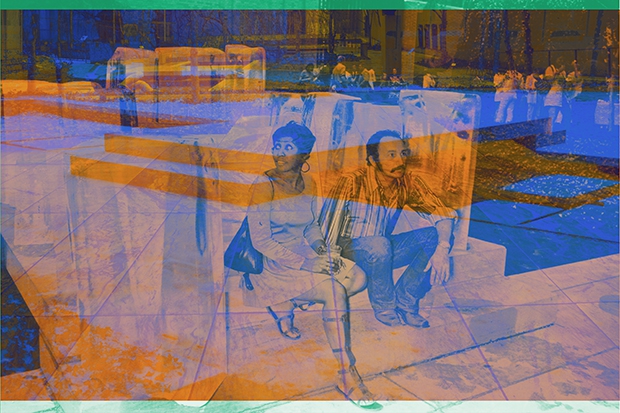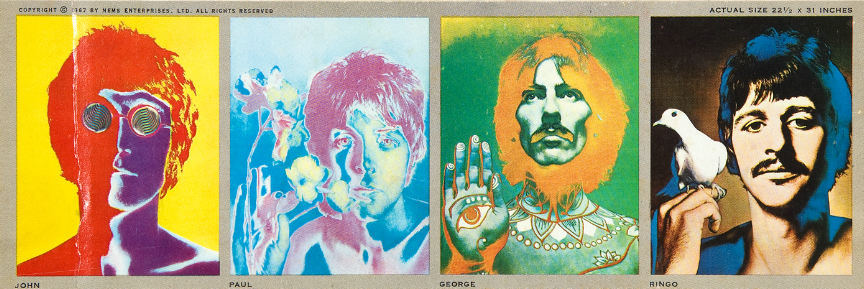Over the past few months I have been struggling with a way to create images that capture the temporal dimension of urban regeneration, encapsulating in some way the past, present and future urban landscape, and place people within this. I have experimented with the juxtaposition of images in early work (using triptych and grid formats) but felt that this was too static a form for such a dynamic process. Following up the work featured in Carol Squier’s 2014 ‘What is a Photograph‘ ICP exhibition led me to the work of James Welling.
I was particularly interested in his Multichannel Works series, in which images are overlayed and manipulated. In his 2017 lecture at the Harvard Graduate School of Design, Welling gives insight into the motivation for and production of this series. In earlier work, he explored the use of colour filters with multiple black and white images to produce complex colour images. For a commission to photograph the MoMA sculpture garden, he worked with archival photos over which her layered his own photographs. He placed the archive image in the red channel, and his own images in the blue and green channels.

In this way he sought to echo the work of Warhol and Rauschenberg in their exploration of the screen print process. He was also inspired by Avedon’s psychedelic pictures of the Beatles and his Moondrops campaign for Revlon.

Other influences included the colour solarisation process and the look of Agfacontour equidensity film, which was used for back cover of Bowie’s Aladdin Sane. Subsequently he began to work with digital images and post-processing software. His initial images were architectural, but he later built on his background in contemporary dance to place dancers within particular built environments, including the Glass House (the focus of an earlier architectural study) and brutalist architecture.
Each composite image is produced from three black and white photographs. In post-processing software, each image is assigned to either the red, blue or green channel, and in some cases an equidensity gradient map is used. The three images used in the construction of the 2015 image 9472 from the Choreograph Series, are shown below, together with the final image.


The final print is produced on an inkjet printer, which Welling uses because it gives a print with texture and a sense of volume and surface, missing in chemical prints. His treatment of prints as artifacts resonates with my own work. Although the work is digitally produced, it gives me the opportunity to explore shooting on film in monochrome (which I can process at home), with the potential for very large prints by shooting on large format. Welling compares with process with the production of double/multiple exposure images in film (as practiced, for instance, by Harry Callaghan), with elements of surprise and improvisation in the production of the image, which also resonates with my artistic interests (in sound and writing as well as visually: the audio control of multi-channel video using Jitter in Max7 achieves similar effects).
The next step for me is to experiment, and get to know what kinds of images work best with this process. These images will include visualisations of developments, photographs of the areas as they are now, photographs of residents and archival material (which might include maps). Producing images that are aesthetically and compositionally strong and also comprehensible will be a challenge. The process itself, inspired by Welling’s work, is just a starting point, and I expect to develop the method and the workflow as I apply the approach to exploration of the context of urban regeneration.
This is my very first attempt, using a photograph of a discussion of self-publishing and post-capitalism at the ICA, a landscape and an experimental close-up.

As Welling says, you have to know where to stop. Lots, as always, to learn.
References
International Center of Photography. 2014. What is a Photograph [exhibition]. Curator Carol Squiers. ICP, New York, 31.01.14 – 04.05.14. https://www.icp.org/exhibitions/what-is-a-photograph [accessed 18.02.19]
Welling, James. 2017. Pathological Color, Rouse Visiting Artist Lecture, Harvard Graduate School of Design, 13.11.2017. https://www.gsd.harvard.edu/event/james-welling-pathological-color/ [accessed 18.02.19]
